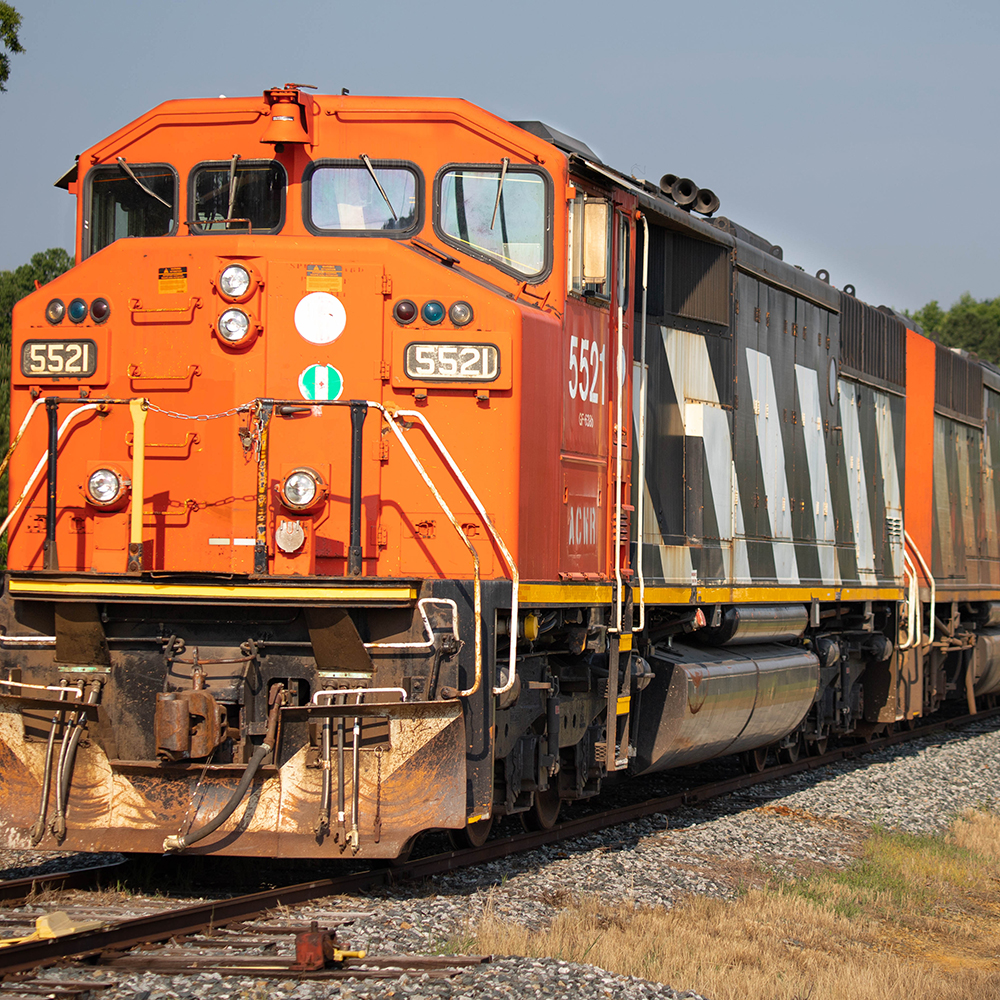The perpetual tribulations of the high-speed rail are reported with an almost clockwork frequency, but they aren’t the only train stories in California. Freight trains might soon be getting a larger share of the attention.
In their eternal search for more dues-paying members, unions want to shorten freight trains. Rail companies are naturally opposed. Legislators seem to be favoring the former, which in union-friendly California is no surprise.
Trains can sometimes reach 14,000 feet, or about 230 60-foot cars in length. But fewer than 1% of all trains in Class 1 (Amtrak is the only Class 1 railroad primarily focused on passenger lines) ever reach this “effective maximum length.” Ninety percent of freight trains are less than 9,600 feet, says the Association of American Railroads. Half are shorter than 5,300 feet.
Senate Bill 667, which cleared its first committee hurdle was made a two-year bill, would ban “certain freight trains with a total length exceeding 7,500 feet from operating on any part of a main line or branch line in this state.” It’s a matter of increasing public and operator safety, says bill author Democratic Sen. Bob Archuleta, who represents parts of Los Angeles and Orange counties. It also “would require a railroad corporation to install and operate a network of wayside detector systems.”
Overall freight line safety has improved since 2000, with the accident rate falling by 28%. In fact, the Government Accountability Office says Federal Railroad Administration “data show that the past decade has been the safest on record for the largest freight railroads.”
Citing federal data through 2024, the Association of American Railroads says:
- The accident rate across all railroads “declined 33% since 2005 and 15% since 2023”
- Industry-wide derailment rates “improved 40% since 2005, making 2024 the second-lowest year on record”
- There has been a “32% decline in yard accidents since 2005”
- Per-carload hazardous materials accidents have declined 80% since 2005”
- The injury and fatality rate among Class 1 rail workers “fell 46%,” setting an all-time low
Long-train safety is increased if railroads merely “pay close attention” to their operations. “The placement of cars of different types, sizes, and weights to manage in-train forces, reduce risks of derailment, and preserve train integrity,” says a National Academies Press report.
Of all the stakeholders, none has a greater interest in safe operations than the railroads themselves. They are exposed to monetary loss and are vulnerable to lawsuits when they suffer incidents. The union’s interest, of course, is jobs. It’s standard for freight trains to operate with two-man crews, so for each long train that has to be split into two shorter trains, an additional two-man crew would be required. This would require railroads to hire more crew members.
While only about 25% of freight trains are longer than 7,500-foot restrictions specified in the bill, long trains are more economical. “For instance,” according to the Alliance for Innovation and Infrastructure, “a train between 10,000- and 12,000-feet moving freight from Illinois to New Jersey would cost around $60,000. The same freight split between two 5,000-foot trains would cost $74,000.”
Furthermore, longer trains mean fewer overall, “decreasing the number of trains that would travel through communities,” says the group, and cutting down the number of blocked crossings that hold up traffic and emergency vehicles.
Moving more freight on a single train also “helps to maximize locomotives, crews, fuel and other resources, and trim labor and diesel expenses,” enabling railroads to reduce the number of trains on their networks, creating more space on certain route segments for additional traffic,” says Progressive Railroading.
Long trains are also more fuel efficient. An Association of American Railroads analysis found that limiting trains to 7,500 feet “would increase U.S. mainline freight train fuel consumption by 13% or an additional 423 million gallons of fuel annually. This would be the equivalent to the annual emissions from about 930,000 cars.”
Since the law would have no authority outside California, if passed, it could create logistical headaches. Would trains that exceed that length coming in from out of state have to stop and drop enough cars to comply? Would another engine or set of engines then pick up those cars and move then into and around California? Would railroads have to keep idled engines available for that purpose only?
It’s conceivable, if not inevitable, that limiting train lengths in California would increase over-the-road truck traffic – which is more dangerous than rail traffic – to haul the freight. Is this what lawmakers want? Because it’s not what the California Department of Transportation wants.
“As in many cases, the most efficient mode to transport freight is rail, and because of this, Caltrans encourages mode shift from over-the-road trucking to the rail system.”
Railroad regulation is a province of the federal government. Senate Bill 677 would usurp that authority and disrupt interstate commerce, which Washington has been tasked with facilitating through the Constitution. It is yet another in the many instances of California refusing to mind its own business.
Kerry Jackson is the William Clement Fellow in California Reform at the Pacific Research Institute and co-author of The California Left Coast Survivor’s Guide.

